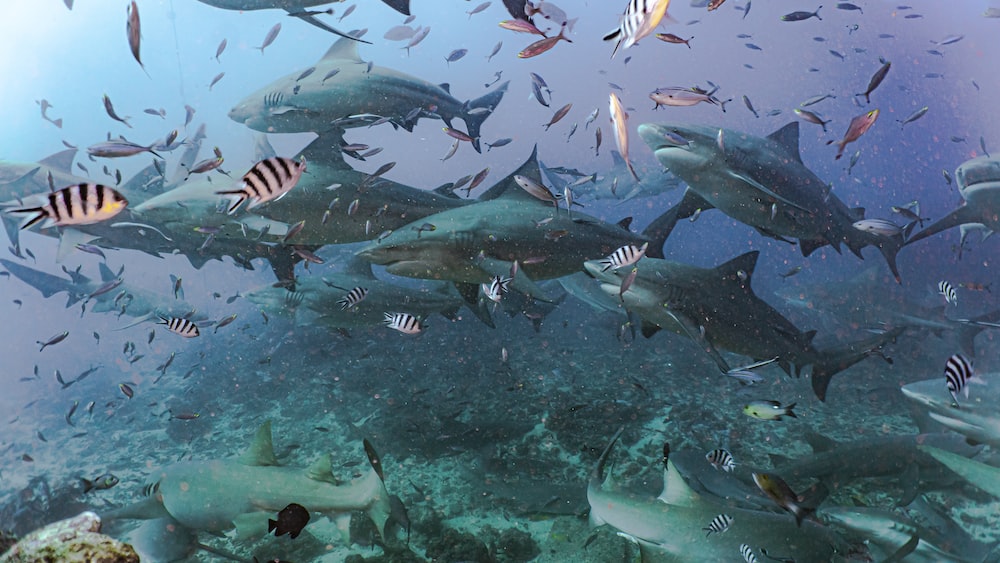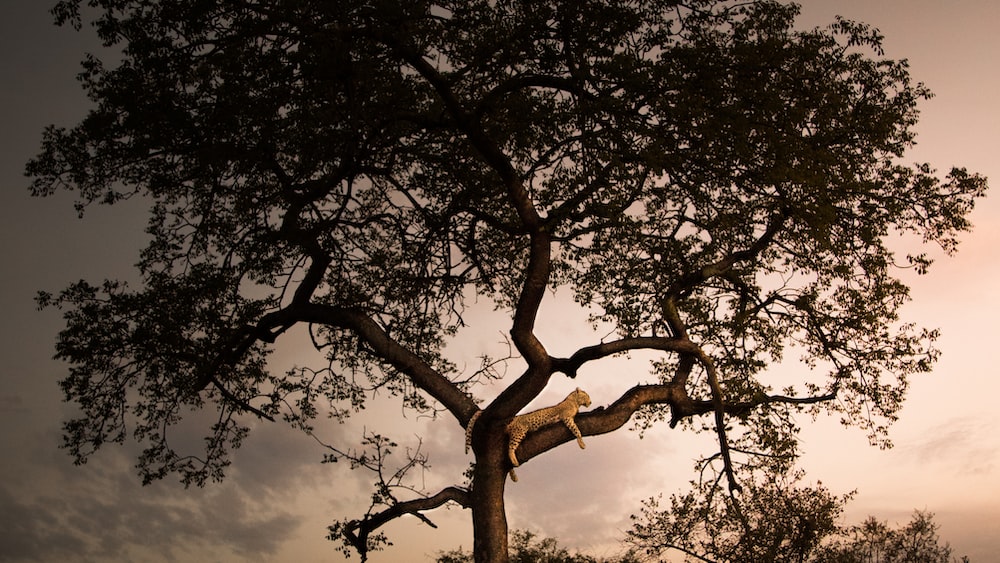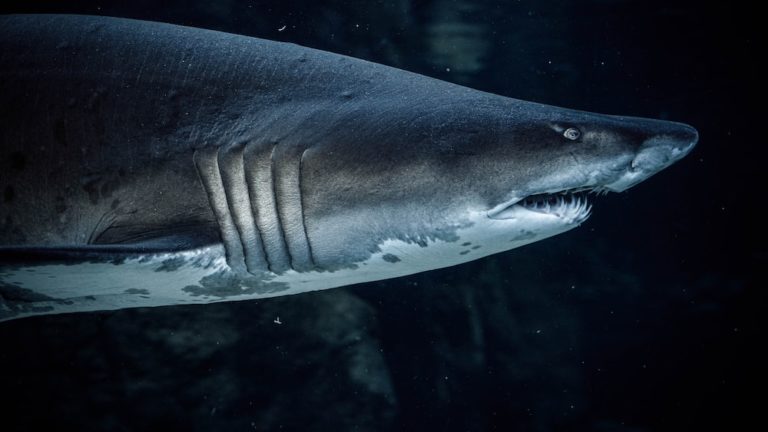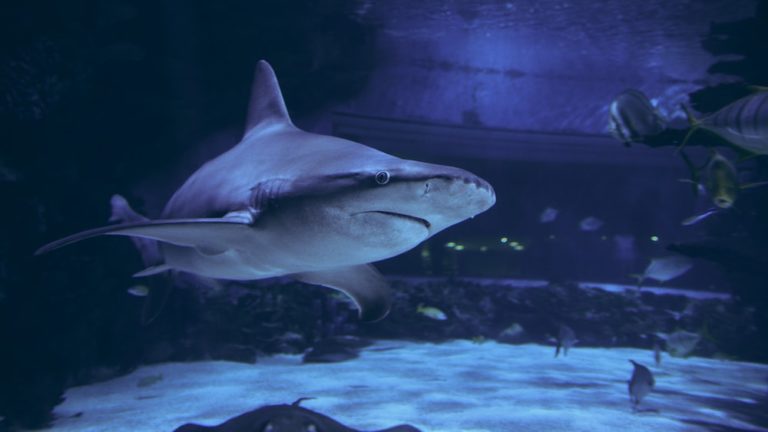Great White Sharks Food Chain: The Ultimate Guide
Great White Sharks Food Chain: The Ultimate Guide
The ocean is one vast, liquid puzzle, with each piece intricately connected to the other. Topping this enigmatic realm are the great white sharks, masters of the marine food web and subjects of awe and mystique for marine life enthusiasts everywhere. Great white sharks food chain is not just a sequence of predator-prey interactions; it’s an intricate ballet that sustains the health of our oceans.
Key Points:
- Great white sharks are apex predators, influencing the entire marine community.
- They have a diverse diet, including small fish, large marine mammals, and carrion.
- Their hunting techniques are a combination of raw power and refined strategy.
- Great white sharks play a crucial role in maintaining the equilibrium of life beneath the waves.
- Overfishing and human impact are altering the balance of the great white sharks’ food chain.
- Conservation efforts are crucial in protecting the great white sharks and their food chain.
Immense in both size and importance, the great white shark, or Carcharodon carcharias, navigates the seas with an evolutionary prowess honed over millennia. Those passionate about our planet’s waters – eco-adventurers, conservationists, and the simply curious – will find that understanding the great white shark’s position in the food chain is key to appreciating nature’s finely tuned balance.
Dive in with me as we glide through the depths to explore the great white sharks’ food chain: from their predatory might to their surprising vulnerability. Our journey will shine a light on the role these majestic creatures play in the ocean’s intricate fabric, and how they shape the environment around them – much like how the moon shapes the tides.
The Predatory Prowess of Great White Sharks
When it comes to the ocean’s apex predators, few command respect quite as unanimously as the great white shark. Famed for their hunting prowess, these formidable predators are quintessential pieces in the ecological chessboard. Their role is significant, influencing not just prey species but the entire marine community. Their strength and strategic hunting position them firmly atop the great white sharks food chain.
An Overview of the Great White Shark’s Diet
The menu for these marine behemoths is as broad as the ocean itself. Great white sharks are far from picky, feasting on a smorgasbord of sea creatures, their diet ranging from small fish to large marine mammals. This variety signifies not only the flexibility of the species but also reflects the availability and abundance of prey in their habitats.
Staple items at the white shark dinner table include species such as sea lions, seals, and occasionally dolphins. These energy-rich mammals are like underwater banquets, providing the great white shark with the fuel needed for their substantial growth and activity. Remarkably, while these predators are known as ruthless hunters, they also play the role of the ocean’s scavengers, sometimes feasting on carrion that provides an easy meal.
Great white sharks have a broad diet, feasting on a variety of sea creatures including small fish, large marine mammals, and carrion, reflecting their flexibility and the abundance of prey in their habitats.
The Hunting Techniques of Great White Sharks
The great white shark’s predatory tactics are a sight to behold, a combination of raw power and refined strategy. They often utilize a hit-and-run technique, ambushing prey from below at breakneck speeds, delivering a debilitating first strike. Post-attack, they tend to wait, allowing their prey to weaken, showcasing not just brawn but also sharks-intuition.
While most of their hunting occurs during twilight hours, maximizing their natural camouflage, recent observations show that these sharks also adapt their techniques based on prey and environment. This versatility in hunting sets them apart and ensures their dominance at the pinnacle of the great white sharks food chain.
The Role of Great White Sharks in Marine Ecosystems
Within their marine realms, the great white sharks serve as integral cogs, maintaining the equilibrium of life beneath the waves. As apex predators, they control the population of primary consumers, thereby preventing overgrazing of foundational species like seabed vegetation and ensuring robust and diverse habitats.
The actions of Carcharodon carcharias also extend to the removal of weak and sick individuals from prey populations, a crucial function that fosters genetic strength and vitality within those species. By trimming the numbers of potential scavengers, they indirectly maintain the tidiness of ocean ecosystems, making them irreplaceable guardians of the oceanic order.
Analyzing the Great White Shark’s Prey
Predators as mighty as great white sharks have prey selections that are as fascinating as the hunters themselves. The prey species not only sustain the sharks but also offer us insights into ocean dynamics and the health of marine ecosystems. Analyzing the great white shark’s prey shines a light on their dietary diversity and teases out the intricacies that form their role at the top of the food chain.

Common Prey Species in the Great White Shark’s Diet
When it comes to the diet of the great white shark, no two days at sea are the same. Their meals include a veritable Who’s Who of the ocean:
- Fish, sometimes in shoals, are typical starters.
- In a grisly twist of fate, even sharks of other species sometimes find themselves on the menu.
- High-fat content meals like seals and sea lions are the favored main course, providing much-needed energy reserves.
- Turtles and carcasses of whales also feature, playing the part of occasional indulgences in this marine banquet.
This variety isn’t just a testament to the shark’s palate but a reflection of their adaptable nature and the species-rich environments they patrol.
The Impact of Age and Size on Dietary Preferences
As great white sharks mature, their tastes and table manners evolve dramatically. Younger sharks, with their more delicate dentition, often content themselves with small fish and rays – a sort of aquatic appetizer platter. As they grow, developing stronger jaws and larger bodies, they transition to larger, more fulfilling prey.
This correlation between age, size, and diet is more than just a curiosity – it’s central to understanding the great white’s ecological niche. In their juvenile stages, they forage among reefs and shallows, whereas full-grown individuals tend to cruise the open waters, asserting their dominance as mature predators at the top of the great white sharks food chain.
The transition in diet from small fish to larger prey as great white sharks mature is crucial for understanding their ecological niche.
Seasonal Variations in Great White Shark Feeding Habits
The feeding habits of great white sharks are not immune to the whims of the seasons. These sharks often travel thousands of miles following migratory prey or seeking optimal birthing sites, their menus varying with latitude and time of year.
In the summer months, they might gorge on seals and sea lions as these mammals congregate for breeding. In other seasons, they might switch to different species, following the ebb and flow of ocean life with a keen eye for opportunity – much like a seafaring gourmand seeking the freshest seasonal offerings.
The Great White Shark’s Position in the Food Chain
Perched at the ocean’s pinnacle, the great white shark is an undisputed heavyweight in the aquatic hierarchy. Researchers regard them as barometers of ocean health and as key components in maintaining marine biodiversity. Understanding the great white shark’s position in the food chain provides unmatched insight into their critical impact on the world below the waves.

Apex Predators: The Dominance of Great White Sharks
The term “apex predator” is no overstatement when describing the great white shark. This regal status is borne out of their few natural threats and an unmatched ability to capture and consume a broad range of prey. It is their presence, or absence, which modulates the food web, maintaining a delicate balance between predation and prey availability in a vast, underwater realm.
Their apex position also means great whites often have a say in the geographical distribution and behavioral patterns of species they dine upon. Other predators are forced to adapt, developing strategies to coexist with these kings of the deep.
Great white sharks are apex predators with few natural threats, modulating the food web and impacting the geographical distribution and behavioral patterns of species they dine upon.
Interactions with Other Apex Predators
The ocean’s vastness houses an array of apex predators, yet the relationships between great white sharks and their ‘peers’ are complex and not without friction. While great whites typically have no rivals in their habitats, they sometimes encounter competition from toothy counterparts like orcas, leading to strategic maneuvering and territory selection.
These relationships are yet another thread in the intricate tapestry that is the great white sharks food chain. When Carcharodon carcharias crosses paths with other powerful predators, the interactions can trigger ripples throughout the ecosystem, influencing prey behavior and distribution. It’s an endless dance among the ocean’s elite, with great whites often leading the waltz.
The Effects of Great White Sharks on Prey Populations
Dive into the blue, and you’ll soon understand that great white sharks are more than just fearsome predators; they’re key players in the ocean’s complex symphony. By predominantly selecting sick or weaker individuals from prey populations, great white sharks help maintain the overall health of fish and mammal groups. This not-so-gentle form of natural selection ensures that only the fittest individuals reproduce, bolstering the genetic vigor of these populations.
Predation pressure from great white sharks is a driving force in the evolutionary direction of their prey, leading to fascinating adaptations that heighten survival chances. For example, seals have developed agile swimming techniques to dodge the swift attacks of these powerful hunters. This dynamic relationship echoes throughout the ecosystem, as changes in prey behavior can influence their breeding patterns and habitat use, creating ripples that affect countless other species.
Without the regulatory influence of great whites’ stomach contents on their prey, the delicate maritime balance might tip into disarray. Imagine a seascape where prey populations boom unabated, leading to overcrowding and a subsequent crash from overconsumption of resources. Thus, these slate grey-colored enforcers of the deep don’t merely contribute to their home range; they safeguard it, ensuring a thriving marine community for generations to come.
Human Impact on Great White Sharks’ Food Chain
As we set sail to explore our impact on the tendrils of life beneath the waves, remember that the great white sharks food chain does not escape the sweep of humanity’s broad net. Our activities, from industrial fishing to climate change, are altering the very fabric of marine ecosystems. The ripples of these changes stretch forth to affect these magnificent apex predators, who rely on a steady and healthy supply of various marine creatures for their sustenance. We must navigate these interactions with care or risk capsizing the balance that has kept the ocean’s citizens thriving for eons.
Overfishing and Its Consequences
Survey the ocean’s bounty, and you’ll catch a glimpse of the havoc wrought by overfishing. This insatiable harvest strips the sea of vital species, leaving great white sharks with a pantry that’s alarmingly bare. Populations of tuna, seals, and other marine staples are dwindling, forcing these hunters to cast their nets wider or adapt their diet to less favorable but more available prey. The ecological dominoes fall quickly as altered diets can diminish sharks’ health and hinder their reproductive success, leading to concerning declines in shark populations themselves.
Overfishing affects not just the prey species but reverberates up the food chain, challenging the dominance of great white sharks in their pelagic realm. As their usual quarry becomes scarce, sharks may turn to other food sources, which in turn disrupts other intersecting food webs. Such disruption can foster a cascade of unforeseen consequences, reshuffling the deck of marine life in perhaps irreversible ways.
On a starkly personal note, envision the vast ocean losing its gleam as great whites’ role as regents of the reef is undermined. Experts thumbing through their stomach contents now often find a tragically meager snapshot of marine abundance, a bleak testament to the consequences of our overzealous fishing practices. The singular silhouette of the great white against the deep blue may fade to a ghostly shade if this unchecked plundering of the sea doesn’t cease.
Conservation Efforts and Their Role in Protecting the Food Chain
In the midst of ocean trials, conservation efforts surface like life rafts, buoying the hopes of those dedicated to safeguarding the intricate networks where great white sharks reign. Through marine protected areas, these predators, alongside their prey, find refuge in waters that are off-limits to fishing and other exploitative activities. Here, within the safety of these boundaries, ecosystems can rebuild and thrive, sustaining the predators and prey that weave the intricate tapestry of the marine food web.
Scientific research plays a pivotal role, unfurling the stories of great white sharks through tagging and monitoring, providing insights into their migratory patterns, breeding grounds, and crucial home range needs. Armed with this knowledge, policies and protective legislation can be crafted with precision, ensuring the preservation of these hunters and their role in the great white sharks food chain. Environmental education further reinforces these actions, cultivating a society that values and protects the ocean’s boundless wonders.
Shark fin trade regulations and anti-poaching efforts underscore the importance of international cooperation in conservation strategies, as they dismantle direct threats that once cast dark shadows over shark populations. By weaving together a network of conservation measures, we are patching the fraying fabric of the ocean’s ecosystems. This multidimensional approach is our steadfast promise to the future, an anthem of commitment to keeping our blue planet’s pulse strong and steady.
The Future of Great White Sharks in a Changing Ocean
As we navigate the tides of change, it’s clear that the great white sharks food chain faces currents of uncertainty. The warming of our oceans, driven by climate change, ushers in waves of new challenges for great white sharks, altering prey distribution and availability, and even impacting their breeding cycles. As they’re buffeted by the shifting seas, these creatures must adapt to a home that’s transformed by our global footprint, or risk sinking into the abyss of extinction.
Yet within this tempest lies the seed of hope, germinating in the consciousness of humans across the globe. We’re beginning to comprehend the reverberating effects of our actions on marine life, acknowledging that we share a common fate with the great denizens of the deep. Can we realign our sails to foster a future where great white sharks continue to glide majestically through the ocean’s expanse? The answer lies in our continued dedication to conservation and sustainable living.
As awareness increases, so does our collective capacity to effect positive change. By reducing carbon footprints, supporting sustainable fisheries, and advocating for marine conservation, we cast stones that send ripples of change across the water’s surface. The challenges are formidable, but the resilience and adaptability of great white sharks offer an inspiring lesson in survival. Our shared voyage towards a sustainable future for these sharks and their food chain is a testament to the human spirit’s ability to adapt, persevere, and protect.
Conclusion
In the grand scheme of things, the great white sharks food chain is a masterpiece of ecological interdependence, a tale of survival and sovereignty beneath the waves. As enthusiasts, conservationists, and mere admirers of the ocean’s majesty, we’ve glimpsed the profound impact of these apex predators on their aquatic realm. Through a lens of respect and wonder, we’ve charted the myriad ways in which our own species intersects with theirs.
Great white sharks, with their slate grey contours and regal presence, remind us of our intrinsic connection to the ocean’s (e)bb and flow. As we take the helm in determining their future – and ours – it’s paramount that we steer a course that promotes harmony and balance. By embracing our role as stewards of the sea, we can ensure that the legend of the great white – a sentinel of the deep – continues to inspire awe for generations to come.
It’s been a deep dive filled with waves of discoveries and insights, and I hope you’re bringing home more than a treasure trove of knowledge. Keep the ocean in your heart and its lessons in your actions. Until our next aquatic adventure, take care, and remember – the sea’s secrets are vast, but so too is our capacity to learn and protect.
Signing off with an ocean of gratitude,
Jasper Flynn.







